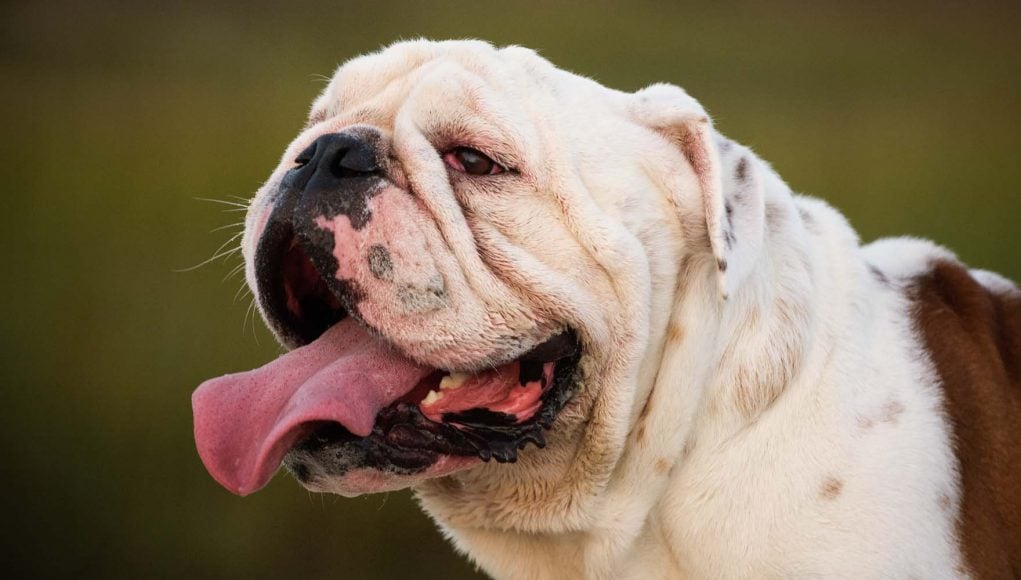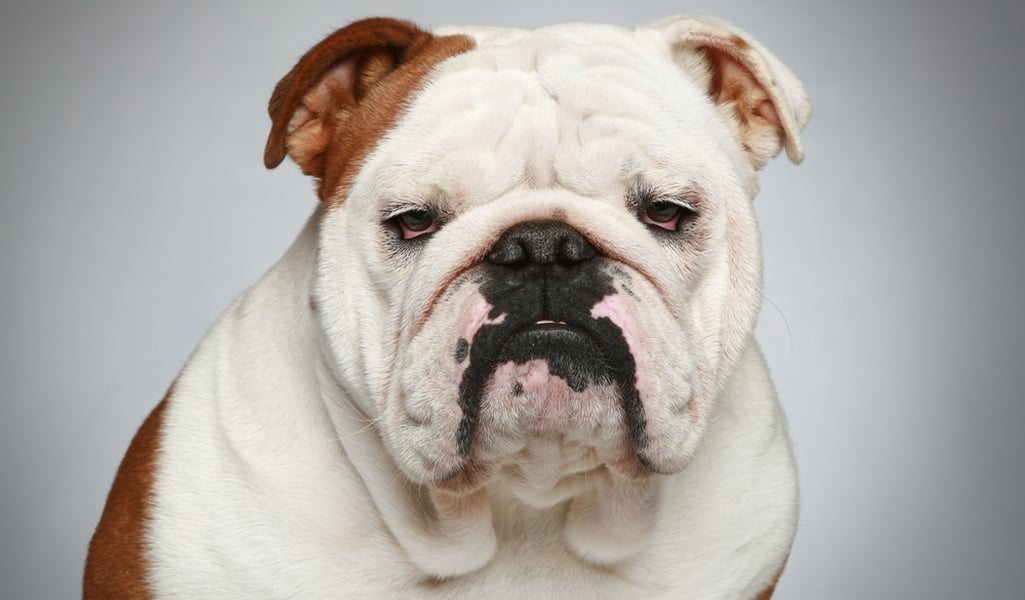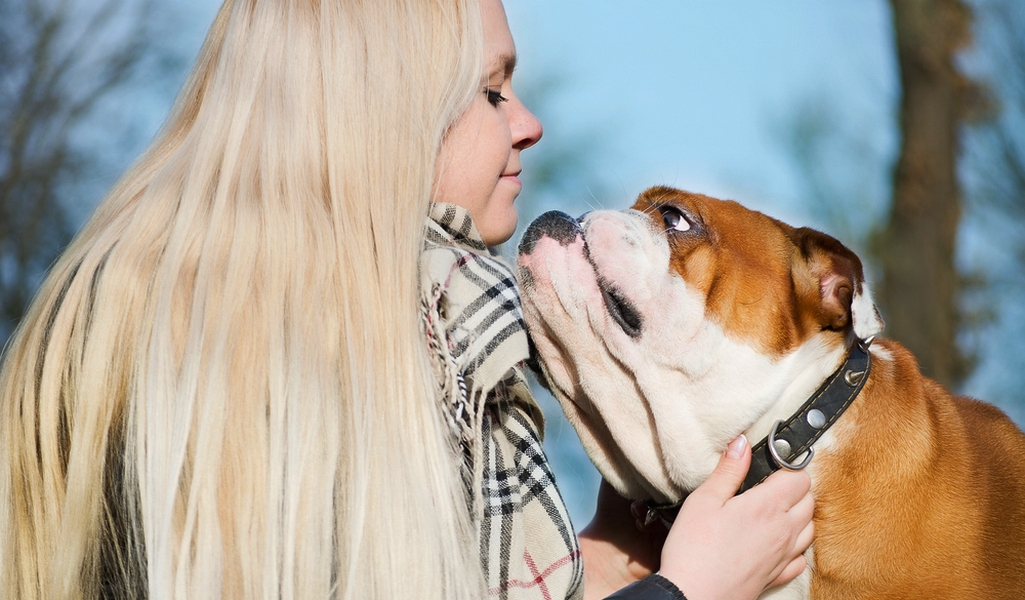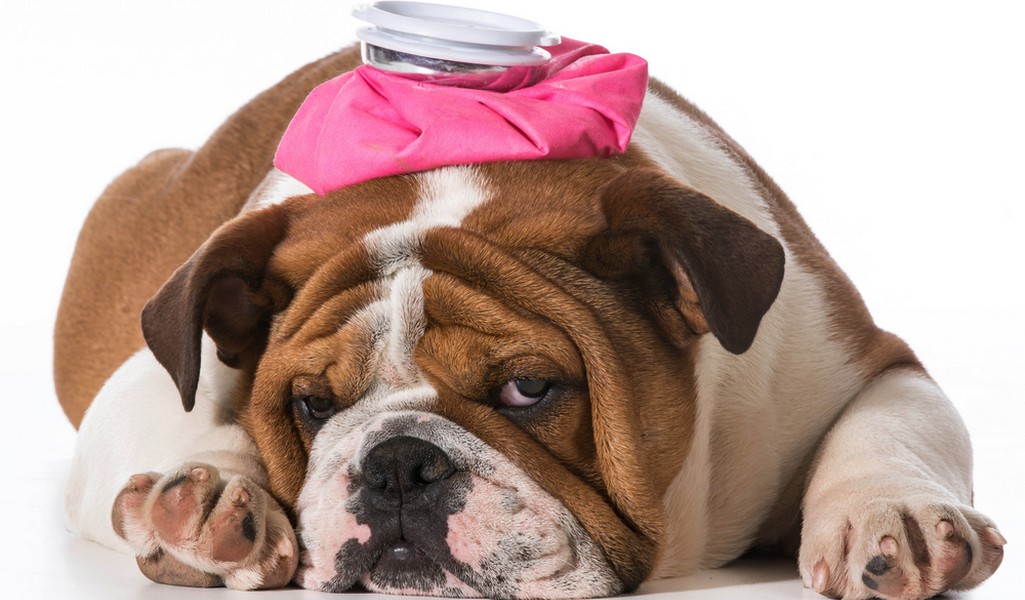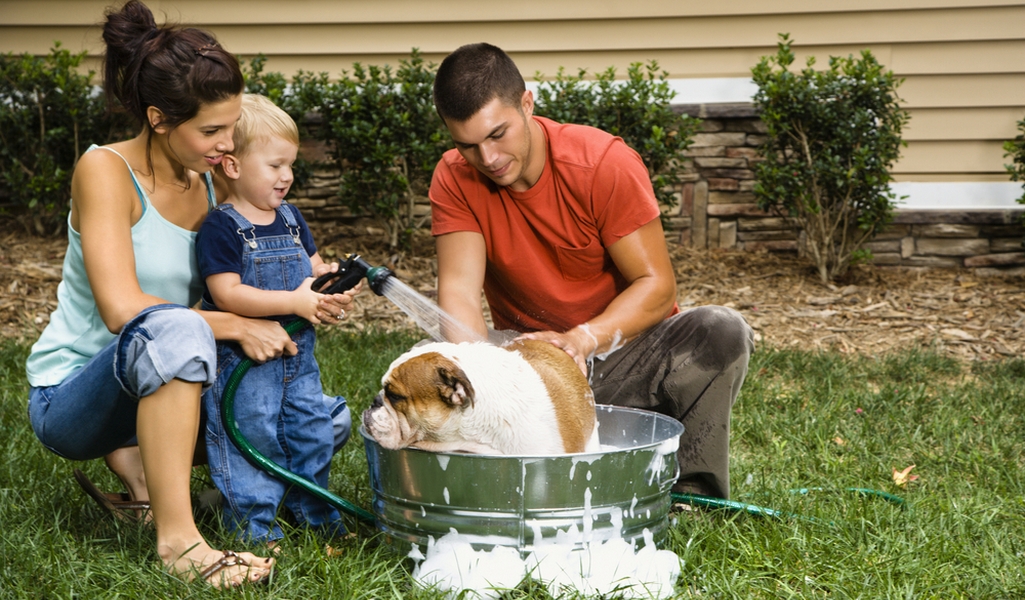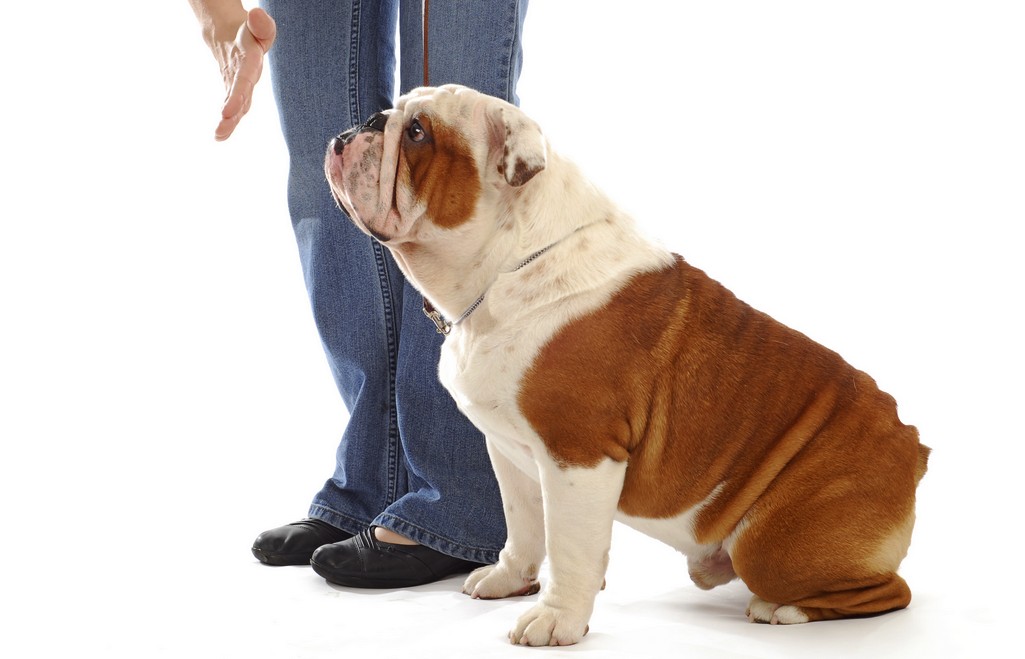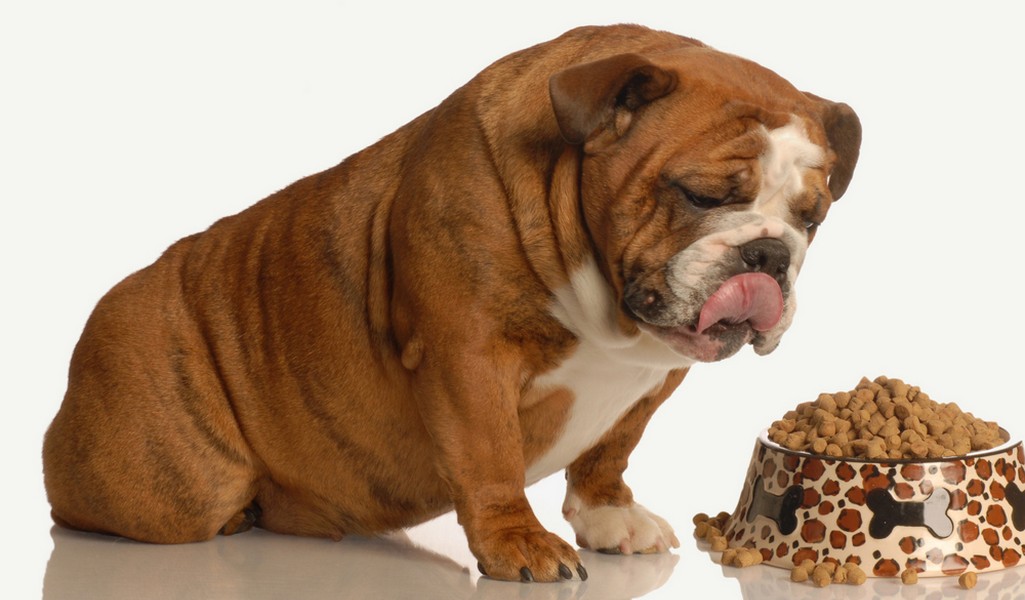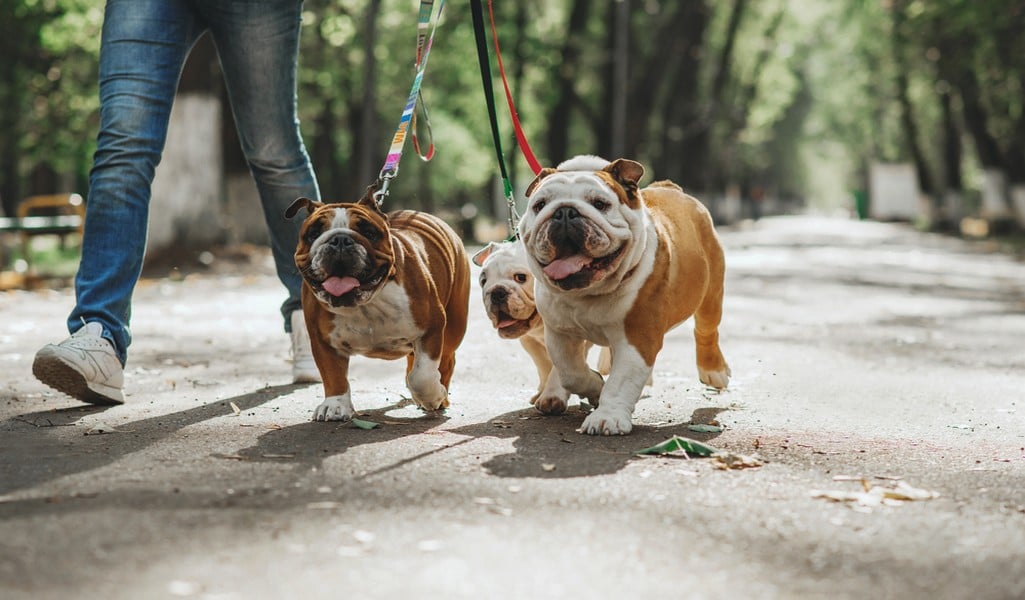Table of Contents
The 4th most popular dog breed in the United States is the Bulldog, also known as the English Bulldog. Bulldogs are known for their medium stature and distinct muscular appearance. You’ll never mistake a Bulldog for any other breed. This Bulldog breed profile will tell you all about what to expect if you adopt one of these funny and charming dogs.
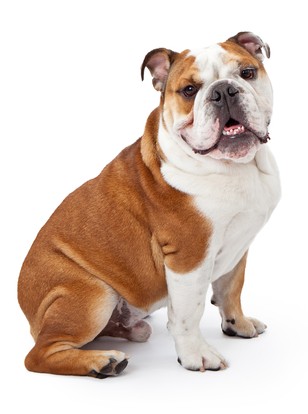 Bulldogs have been portrayed in a lot of shows and movies as the mean boss. This is usually due to their grouchy look, under-bite that always shows teeth, and deep-set eyes. But what is not typically portrayed is their lovable and soft-hearted nature.
Bulldogs have been portrayed in a lot of shows and movies as the mean boss. This is usually due to their grouchy look, under-bite that always shows teeth, and deep-set eyes. But what is not typically portrayed is their lovable and soft-hearted nature.
With their relaxed and easygoing temperament, this loving dog wants to be in your lap. As hard as they try, you may not actually want them there since Bulldogs can also be quite heavy. They are a very muscular breed, so their weight is deceptive in relation to their small stature.
If your ideal day consists of going for a short walk around the neighborhood and then relaxing at home for the rest of the night, then the Bulldog would be an excellent companion for you. After reading this Bulldog breed profile you can decide for yourself. These dogs can have a short window for a burst of energy, but on average, enjoy relaxing on the couch in a nice cool home.
English Bulldog Breed Profile
Main Characteristics of English Bulldogs
Bulldogs are a great breed for almost any lifestyle, unless you want a dog that will keep up with you on hiking adventures and bike rides. Whether you live in a large home or a small apartment, the Bulldog will make himself at home. He won't need a lot of yard space either, so Bulldogs are great breed for folks living in the city.
They are a friendly breed and are known for enjoying children. They also tend to get along with other animals very well. A Bulldog would make an ideal family pet or an excellent companion for a single person. Bulldogs are full of personality and they love to be around people.
Size of Bulldogs
Bulldogs are medium sized dogs. On Average, they will range from 12-16 inches high at the shoulder. They usually are about as long as they are tall. Even though they’re on the shorter side, they’re heavy! Most Bulldogs will weigh between 40-50 lbs. Like most breeds, females are usually smaller than their male counterparts.
Lifespan of Bulldogs
Many things can affect how long your companion will stay with you. How well he's exercised, what and how much he eats and even genetics will all effect his lifespan. Most Bulldogs will live to the age of 8-10 years old. Keeping your dog in optimal shape can add a couple of years to his life, and letting him become obese can take years off of it. The less strain that your dog has on his body, the happier and healthier he will be.
Physical Characteristics of Bulldogs
You’ll never wonder if that dog you just patted was a Bulldog or not. There is no other breed that looks like them – they are very unique! In this Bulldog breed profile, we'll explain their distinctive look.
Starting from their head they have small, thin ears that fold over and sit on the back of their head. Deep wrinkles and folds start from their foreheads and go down all the way to their jowls. A Bulldog's eyes are wide-set on top of their short muzzle.
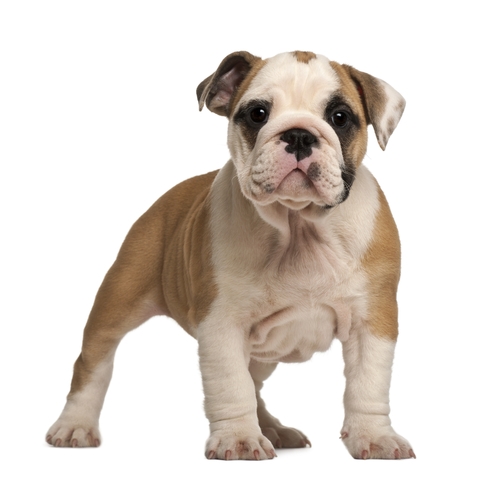 They have a broad black nose and their upper lip hangs down low. Their lower jaw is undershot which gives them a strong under-bite. The lower jaws were designed to latch on to their enemy and not let go.
They have a broad black nose and their upper lip hangs down low. Their lower jaw is undershot which gives them a strong under-bite. The lower jaws were designed to latch on to their enemy and not let go.
RELATED ARTICLE: Brachycephalic Breeds – What's the Difference?
The breed's large and wide heads sit on top of a wide-shouldered body. Their shoulders are wide set and taper down slightly as the body approaches their waist. A Bulldog's legs are short and sturdy to hold up their massive weight, and since their legs are so wide set it makes them have a waddle for their gait. This makes them slow and not great at running.
Bulldogs have short tails that can curl on the lower part of their rump. Like the rest of their body, their tails are covered in a short, slick, smooth coat. Most Bulldogs will come in a combination of 10 different colors including brindle, white, red, and fawn. Some of their markings include black masks, white markings or piebald markings.
Living Arrangements for Bulldogs
Bulldogs do not require large yards, which makes them great for city dwellers. They also do not bark often, which makes them great if you live in an apartment or condo. If you have an active lifestyle, this Bulldog breed profile will quickly teach you that a Bulldog may have a hard time keeping up with you. If you are single, have a young family or are retired, Bulldogs may be a great choice, as long as you spend a lot of time at home with them.
Although they can usually be home on their own, lazily sleeping on the couch, Bulldogs do want companionship and to be close to their people. They love physical contact and would enjoy snuggling on the couch or lying in your lap.
Although they have a face that only a Bulldog lover will love, their personalities will get through to everyone. Just remember, don’t judge a book by its cover. In this Bulldog breed profile you'll learn exactly why so many pet parents love their Bulldogs!
Socialization of Bulldogs
If you’re looking for a guard dog, keep looking. Bulldogs are known to scare away people with their looks, but after a moment, people will realize that these dogs are actually rather non-aggressive and are just looking for some attention. Bulldogs as a whole are calm, friendly, and loyal.
As long as your Bulldog has been socialized from a puppy and you have kept him social they will be very receptive to having other dogs around and even small children. Your Bulldog will always want to be by your side, and this breed is great for stay at home parents or retired people who spend a lot of time at the house.
Best-Known Bulldog Facts
Bulldogs aren’t barkers per say, but they can make a lot of noises. A lot of these noises come while they’re sleeping. Since they have a short muzzle, Bulldogs are known for having breathing issues, which will make them snore, snort, and wheeze.
It wouldn't be a Bulldog breed profile without discussing all the noises that you'll hear from these dogs. Noises don’t just come from the front end; you’ll find that Bulldogs are rather flatulent in general. No matter what you feed them, their gas can be excessive at times. With lower grade food and “junk” food, you’ll find that they let go even more often.
Another fun fact, Bulldogs have been used as a mascot for many different organizations including, universities, schools, and even the US Marines. They are great symbols for their mean look and stubborn personality.
Although Bulldogs are now known for their passive nature, they are courageous and loyal. These dogs will protect their family no matter what. But if no one is threatened, they will hold themselves in a dignified manner while looking on passively.
Bulldogs are persistent. If they want something they will keep at it till they get it. If it’s something they’re not allowed, make sure to keep it up high so your Bulldog can’t get it.
Bulldogs are also known for their bullheadedness or stubbornness. Once they get something stuck in their heads they will work tirelessly to do it. This is the main reason that you will likely find your pet in a few hilarious positions over the years.
When they’re not being stubborn, Bulldogs are usually being lazy. They are easy-going and just love to relax around the house. Easy to train and very affectionate, it's no wonder this breed is a favorite with pet parents around the world. After you've finished reading this Bulldog breed profile you can decide if you're ready to invite one of these loving dogs into your home.
Bulldogs are also known chewers, which we'll discuss more a bit later in this Bulldog breed profile. Make sure to have lots of durable toys and ropes available for them to chew on. While training, make sure to teach them what is acceptable to chew on and what is not, like your shoes.
Another thing that should be mentioned in this Bulldog breed profile is that this breed is bred to be a companion dog. Having a second Bulldog of the opposite sex will give them each companionship for when you’re not home. They will be much happier having that friend close by.
Bulldog History
Now, what would a Bulldog breed profile be without a history of the breed? Sadly, Bulldogs have a very bloody history. Their ancestors only have a slight resemblance in their build to the Bulldogs that we now have as companions and love fiercely. From the 15-17th century, Bulldogs were used in the bloody sport of Bullbaiting. This is where they got their name.
Bullbaiting was a spectators sport where a bull, that was ready for slaughter, would go up against a few Bulldogs. It was the dog’s job to go and attack the bull, biting, ripping and tearing its skin until it bled. It was believed, back then, that the bleeding of the Bull made the meat more tender when it was slaughtered.
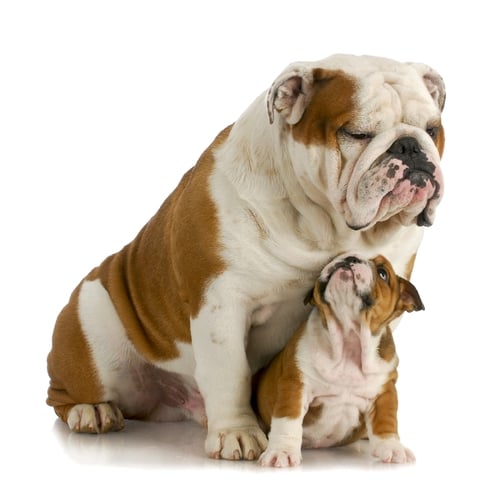 Bulldogs would also be pitted against other aggressive animals, like bears, in these sporting arenas just for the pure entertainment of it. This was back in the age of the gladiators when the Roman’s used fights to the death as a source of entertainment. Some of the less aggressive Bulldogs still had jobs, being used mainly as cattle herders. Keeping the cattle in the herd and helping to move them around.
Bulldogs would also be pitted against other aggressive animals, like bears, in these sporting arenas just for the pure entertainment of it. This was back in the age of the gladiators when the Roman’s used fights to the death as a source of entertainment. Some of the less aggressive Bulldogs still had jobs, being used mainly as cattle herders. Keeping the cattle in the herd and helping to move them around.
In 1835, Bullbaiting was outlawed due to its cruelty. Many believed that since there was no longer a reason for Bulldogs that they would become extinct. Thankfully for us today, that is not the case. Many lovers of the Bulldog didn’t want to lose this breed, but since they were aggressive they weren’t great as a companion. So, over many different generations, the aggressive tendencies were bred out of the Bulldog. This made the breed more loveable and more like the easy-going, relaxed Bulldog that we know today.
In 1859, the first Bulldogs were entered in conformation shows in England. In 1860, the first show to allow Bulldogs to enter was hosted in Birmingham, England. In 1861, for the first time ever, a Bulldog by the name of King Dick won at the Birmingham show. A descendant of his, who went by Crib, was to be described as “close to perfection.”
In 1864, R.S. Rockstro formed the first ever Bulldog breed club, which had only 30 members in its ranks. Their motto was “Hold Fast.” Samuel Wickens, who was a member of the club, wrote the first ever Bulldog breed standard known to the world under the penname of “Philo-Kuon.” Unfortunately, this group only lasted 3 years before it disbanded.
RELATED READ: French Bulldogs Breed Profile
In 1875, another Bulldog breed club started, they adapted a lot of the breed standard that was written by Philo-Kuon. This club is still around to this day. In 1880, the first Bulldog was brought to the United States and shown about New York.
In 1886, The American Kennel Club (AKC) allowed Bulldogs to register for the first time. Bob the Bulldog was their very first member for his breed. In 1890, The Bulldog Club of America was founded by Kendall of Lowell, Massachusetts. They subsequently became one of the first breed clubs to join the AKC.
In 1894, The Bulldog Club of America chose to change from the British breed standard to the new American breed standard to better reflect the “American-bred Bulldogs.” The British were not happy with all of the changes that were made. It took nearly 2 years for the British and the Americans to agree upon a revised version of the Bulldog Standard, which was officially accepted in 1896. This is still the current Bulldog Standard that you can find and use today.
Famous Mascots
Of course, our Bulldog breed profile needs to mention some of the famous Bulldog faces that we've seen over the years. These Bulldogs have been adopted to be mascots for large organizations. Some of these mascots include:
- Handsome Dan – the original mascot for Yale, all of their following mascots have also been Bulldogs and have also been known as Handsome Dan
- Uga – the mascot for The University of Georgia; all subsequent mascots have also been called Uga
- Chesty – originally adopted by the U.S. Marine Corps in World War I; since then Bulldogs have always been the mascot for the USMC – all subsequent Bulldogs have been named Chesty after the original
Bulldog’s General Health and Common Ailments
Bulldogs are a sturdy and healthy breed. There are not many common health issues that you will come across with these dogs, and the ones that are listed are usually easily dealt with.
Bulldogs can have Cherry Eye, this is when a small lump can develop under the 3rd eyelid and will come out in the corner of the eye. This makes it look like a cherry coming out. If this becomes large enough to bother the dog it can be removed surgically.
Bulldogs are also known for having dry eye. If it is a cause for concern for you or your Bulldog, check with your vet for what eye drops you can use to help lubricate his eyes. In this Bulldog breed profile you will learn that eye conditions like this are common in dogs with bulging eyes.
Entropion can be an issue to your Bulldog as well. This is when the eyelashes rub against the eye which can cause them to become irritated. If this issue bothers your Bulldog, which it most often will, you can have them surgically altered or removed.
A Bulldog's ears require minimal maintenance due to being open to the air, most moisture and wax will be able to dry and fall away naturally. We will discuss proper ear grooming later in this Bulldog breed profile. Once in a while, make sure to check and clean the ears with warm water and a soft towel. You can use a cotton swab on any wax build up, just stay away from the ear canal itself – this can cause more issues than you’re trying to prevent.
Dogs with short muzzles, like the Bulldog are known as brachycephalic breeds. These dogs usually have an elongated soft pallet, which can cause them issues with their breathing and make it very hard for them to deal with any extreme heat. Keeping your Bulldog cool and calm will go a long way to helping his breathing.
If your dog is having extreme issues with breathing, you can check with your vet for possible surgical fixes.
Bulldogs are also prone to skin infections, which we'll talk about in more detail later in this Bulldog breed profile. With the amount of wrinkles and folds that they have, it’s imperative that you separate the and smooth out the folds and clean them with warm water and soap. Make sure to dry them as well to prevent the skin from being irritated.
On very hot or humid days or when going out to play, make sure to keep the folds clean and without irritants. Small particles can cause abrasions, which can become infected. If you’re not regularly checking they can be missed until your dog becomes sick.
Due to their stature and the amount of wear and tear that they can put on their joints, Bulldogs may have issues with their hips and knees. Often they can have hip or knee dysplasia. Your vet should be able to see this during your regular visits. There are usually signs of these issues when when Bulldogs are puppies, so make sure the breeder you select tests for these conditions.
How to Groom a Bulldog
Bulldogs have a short slick coat, but they still shed. In order to keep their shedding down you'll need to make sure to brush them once or twice a week. Using a soft curry brush or shedding tool should be sufficient for them. Remember that during the change of the seasons your dog will shed more often. To keep the hair off your floor, furniture and clothes brush them 2-3 times a week during these peak shedding times.
In this Bulldog breed profile we've already discussed the issues that can pop up if you don't properly clean a Bulldog's wrinkles and folds. You'll need to use a damp cloth with warm water and soft soap to clean all the folds and wrinkles. This should be done at least weekly. If you find that it’s been exceptionally humid or that your bulldog got dirty, make sure to clean it right away. This will keep the dirt and debris out of their folds and keep it from cutting their skin and causing infections.
Ears
A Bulldog's ears are very easy to care for. Periodically check them to see if there’s any wax build up inside, and if so, wipe it away with a warm cloth. If you find that there is a lot of excess build up, you can use a cotton swab, but never go into the ear canal. This can cause severe issues to your dogs hearing, and should only be done by veterinarians or professional groomers.
Nails
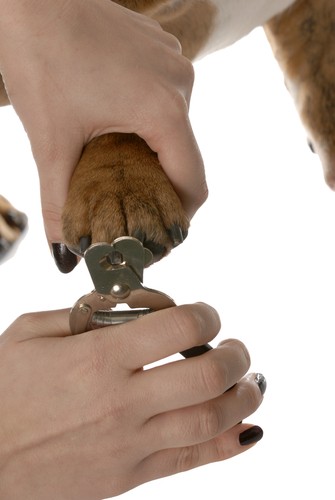 Your Bulldog will not be able to naturally wear down his nails, because they are not active enough to do this. You'll have to make sure to clip or grind the nails on a regular basis. You should not be able to hear the nails go click, click, click as your dog walks through the house.
Your Bulldog will not be able to naturally wear down his nails, because they are not active enough to do this. You'll have to make sure to clip or grind the nails on a regular basis. You should not be able to hear the nails go click, click, click as your dog walks through the house.
RELATED: Review – Andis Premium Dog Nail Clippers
If nails become too long, this can cause them to crack or break. Even worse is having them get caught on something and rip off. This will mean a trip to the vet to get stitches at the very least. With some easy preventative care, you can keep your Bulldog healthy and happy.
Teeth
Oral care is very important to helping your dog keep all of his teeth. You can brush his teeth on a regular basis and also use some of the dental chews available on the market or just natural products like antlers and cow bones. Working away the extra plague and grime that gets stuck on his teeth will help to keep your dog healthy.
Since Bulldogs have a short muzzle this is even more important to do. Their jaws are strong enough that they’ll be able to tear through anything that you give them, and they typically enjoy chewing. If your dog isn't motivated to chew traditional dog toys, buying him a tasty dental chew may help.
Obesity
Obesity is a very common problem in many breeds, and as you'll learn in this Bulldog breed profile it's seen quite often in Bulldogs. The good news is, it's an easy problem to keep in check. Making sure that your dog has an adequate amount of exercise and not an excessive amount of foodis the key to making sure that he stays at a healthy weight.
If your Bulldog is too heavy for his frame, even though they are a heavy dog to start with, it can quickly cause joint issues. This makes it even harder for them to walk and get around. Their legs are short to begin with, so they need to be able to carry their bulk.
Giving Birth
Delivering puppies is extremely difficult on the female Bulldog. Due to the shape of their hips, it is very hard and can be life-threatening to both the mother and pups. More often than not, and your vet will probably recommend, that if your female Bulldog is due to have a litter she has a caesarean section in order to keep everyone safe and healthy.
How To Train Bulldogs
Bulldogs need to start their training from a very early age. They can become very stubborn and stuck in their ways if you let them go too long before learning the rules of your home. You need to make sure that they know who the Alpha in the family is, and fast. This will make the rest of their training easier, but as this Bulldog breed profile will explain, you're sure to still find streaks of their stubbornness shine through.
Make sure to stay patient and relaxed when working with your Bulldog. The energy that you put into the training will pass over into your pet. If you’re stressed out he will become stressed out and not able to respond properly. A calm and authoritative command will get through to him much faster.
Exercise
Bulldogs don’t want to be exercised regularly. They may have bursts of energy for short periods but then they’ll want to go lay down in the shade for a nap. Even though they don’t want to exercise it’s very important to make sure that they get it. This will help to keep them slim and healthy. Keeping your dog from becoming obese should be a top priority in order to keep him healthy for years to come.
Make sure to keep your dog in a climate controlled home during extreme heat. They have too many issues with their breathing to be able to stand the heat.
Bulldogs don’t require an excessive amount of exercise, though. They may chase a ball for a couple of throws, but, as previously mentioned in this Bulldog breed profile, it's hard for these dogs to run, so they’re more likely to just wrestle with a toy.
You can take your Bulldog out for walks in the cooler parts of the day or just stroll through the yard with him in the morning or evening.
RELATED: How To Motivate an Overweight Dog
One of a Bulldog's favorite exercises is going for short walks. Going for a couple of 15 minute walks a day is sufficient to keep them, healthy as long as they have a proper diet.
Your Bulldog may love the water, but due to their structure, they’re not natural swimmers. They’re more likely to sink than they are to swim. If you are interested in having your dog join you in your watersports, make sure to get him his own life jacket. This will help to keep him safe so the whole family can have fun.
What To Feed Bulldogs
Healthy nutrition is very important to keeping your Bulldog lean, trim and healthy. When Bulldogs over eat they can become obesem which causes a lot of strain on their joints and organs. We've discussed the dangers of obese previously in this Bulldog breed profile, but it's very important that you take this matter seriously. Obesity will increase your dog's chances of having hip or knee dysplasia and many other health issues. It will take time off of his lifespan.
Keep your Bulldog to just dog food (the higher the grade the better) and keep the table scraps away. Most dog food manufacturers have specific types of products for the different breeds, or at least for a small dog versus a big dog. Get food for small to medium dogs. You’ll also want to watch out for the amount of fillers that are in the food. Go for meats over grains when picking your dog's food.
Your Bulldog should get 1-1 ½ cups of food a day, and you'll want to split this into 2 meals. Do not let them free range – Bulldogs will overeat if given the chance.
Best Dog Food for Bulldogs
What kind of Bulldog breed profile would this be if we didn't discuss the best food for the breed? Selecting the best food for Bulldogs is important, as it will cater to your pet's specific needs. A quick conversation with your vet will teach you about the proper nutrition for a Bulldog, and which diet may be best for your pet. Keep in mind that all Bulldogs will have different nutritional needs depending on their weight, age and any health conditions they may have.
Here are quick picks for the best dog food for Bulldogs, but be sure to speak with your vet before choosing one for your dog:
You can find more information on general best dog food brands in this review.
How are Bulldogs with Children?
Bulldogs get along famously with children. Their stoic patience and easy going nature mean that they will be able to relax around the child. They’re also big enough and sturdy enough that they’ll be able to take whatever the children dish out to them.
Make sure that play between small children and dogs is always supervised to keep everyone safe. Teaching your children how to approach and play with all dogs is also very important. Children and dogs have one very dangerous thing in common – they are both highly unpredictable. They should NEVER be left alone together.
Where To Adopt a Bulldogs and Bulldog Puppies?
There are three different ways to acquire your new Bulldog. You can go through a Breeder, an adoption shelter or through the various breed specific clubs. You've probably been reading this Bulldog breed profile because you're interested in the breed. If you think a Bulldog may be right for your family, be sure to adopt responsibly.
Breeder
Even though at one point it was thought that the Bulldog would go extinct, this is thankfully not the case. Due to the love that the owners have for this breed, Bulldogs have grown to be the 4th most popular breed in America. With the issues of giving birth that we discussed earlier in this Bulldog breed profile, these dogs are extremely expensive and limited in the number of puppies that are available. You may end up on a waiting list waiting for your new puppy.
Looking for a reputable breeder should be of your highest concern when looking to purchase your new puppy.
Look for someone who is interested in you, your family and how you live. You’ll want a breeder who is interested in the welfare of their pups and where they are going to be placed. Reputable breeders will also make sure that the adults are well-taken care of, that the pups are well socialized and that the litters are in a clean safe area.
RELATED: Where to Buy A Dog: Responsible Adoption
Your breeder should be open and honest about the different diseases that are genetic in Bulldogs, and they should have several different tests done on the puppies before you get them. These should be registered with the Orthopedic Foundation for Animals (OFA). The tests include hip dysplasia and elbow dysplasia.
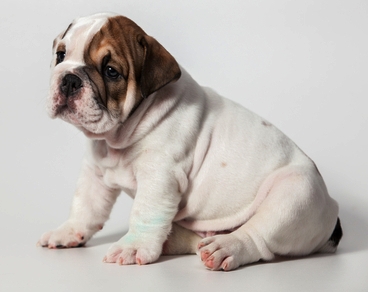 Your puppy should also have his eyes tested through the Canine Eye Registry Foundation. You can check that these tests have been done and what their results are on the OFA website. Keep in mind that all results are available on the OFA website, not just the passing tests, so make sure to check what the score is before adopting your new puppy.
Your puppy should also have his eyes tested through the Canine Eye Registry Foundation. You can check that these tests have been done and what their results are on the OFA website. Keep in mind that all results are available on the OFA website, not just the passing tests, so make sure to check what the score is before adopting your new puppy.
You can also find reputable Bulldog Breeders that are registered with the American Kennel Club.
Adoption Shelter
Unfortunately, for many different reasons, Bulldogs cannot always stay in their home. This does not mean that they are bad dogs or even that it’s a problem with the dog. As you've learned in this Bulldog breed profile, this breed is loving and affectionate. Some could have come into the shelter due to a break down in the home or the passing of a loved one.
Many of these dogs are great and just need a new forever home. And let’s face it, you can skip the puppy stage by doing this.
There are many great sites that you can go to and find your new companion, and of course, you should try to find out as much information as you can about these dogs. By adopting an older pet you'll also be able to tell more easily if the dog has any health issues. Hip dysplasia and other genetic defaults will be more prominent in an older dog.
Clubs
The Bulldog Club of America is a great place to gather information on where to find and acquire your new Bulldog. They will also help you with any questions that you may have about your new dog or on any of the breeders that they are connected with. This club is an excellent resource to find reputable breeders or dogs who are in need of help.
What to look out for?
When acquiring your new puppy, you want to first and foremost stay clear of puppy mills. Places that are just in it for the money and don’t actually care for the well-being of the dogs or where they are going to be placed are not responsible places to find a puppy. Other signs of puppy mills are how the dogs are housed and how many litters are at the facility at any given time.
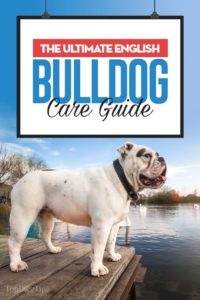 Another sure sign of wrongdoing that needs to be mentioned in this Bulldog breed profile is when there are no papers available for your new dog (unless getting a shelter dog under certain situations). All new puppies should have their shots and be tested by vets and professionals before they can be placed for adoption.
Another sure sign of wrongdoing that needs to be mentioned in this Bulldog breed profile is when there are no papers available for your new dog (unless getting a shelter dog under certain situations). All new puppies should have their shots and be tested by vets and professionals before they can be placed for adoption.
Puppies should never be taken away from their mothers before they reach the age of 8 weeks. They need this time to learn proper socialization skills and also have time for all of their checkups and proper veterinary care. Make sure to visit your vet within days of getting your new dog. They will be able to go over them and check their health.
Hopefully this Bulldog breed profile has explained everything that you'll need to know in order to decide whether a Bulldog is right for your family. As long as you have plenty of time to spend with him and your lifestyle isn't too active, a Bulldog should be a good fit. Be sure that you're able to spend the money on the proper food, supplies and vet care that your Bulldog will need.


